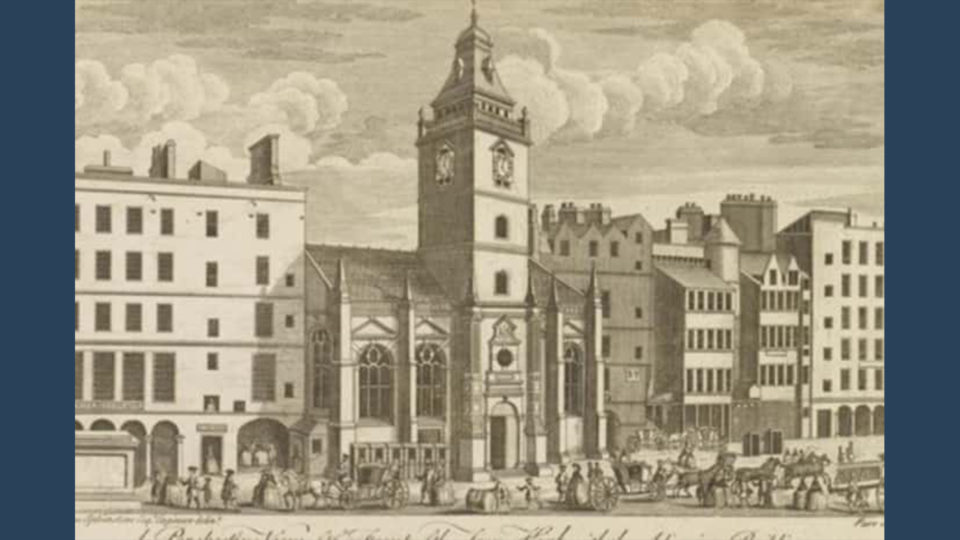History of Christian Missions: Mobilizing Scottish Missionaries

Last week, we began a series of posts studying what caused the small country of Scotland to play such a large role in the Great Century of Missions. In our first post, we discussed the evangelical revival that took place in Scotland and the preachers who consistently preached on sin, grace, and salvation. This week, we will look at two additional factors that contributed to the mass mobilization of missionaries from Scotland.
Scottish Sacrifice
The Scottish missionaries possessed a dogged determination that had a profound impact on those to whom they brought the gospel. In his autobiography, John Paton described the indigenous people being perplexed at the resolve of the missionaries. Death and thievery would not deter the missionaries, and they often returned with more workers. “If their God makes them do all that, we may well worship Him too.”1
For many Scottish missionaries, this determination and willingness to sacrifice was forged in the mills and factories in which they were employed as children during the Industrial Revolution. The working conditions were abhorrent in the factory, and homes were overcrowded as the British population doubled in just 50 years. Children suffered horribly under the poor living conditions.2
We cannot ignore this part of history as we examine Scottish missions during the Great Century. The labor and living conditions that marked their childhoods helped prepare the missionaries for lives of sacrifice, ill health, and the threat of death. John Paton’s time in the hard streets of Glasgow was preparation for the peril that awaited him on the island of Tanna. Hard labor in Scotland prepared David Livingstone and Mary Slessor for the exhaustion that awaited them in Africa. They learned from childhood the need to depend on the Lord for sustenance, which helped them persevere through the difficulties of the mission field as adults.
I praise the Lord that proper working conditions exist in the West today and I yearn for the day where child labor is abolished across the world. I wonder, though, how a coddled childhood filled with technology and devoid of any chores or challenges sets our children up for future missions work. We have an opportunity to strategically train our children to work hard and persevere in difficult tasks.
The Charge Given
Biographies of Scottish missionaries highlight the importance of teachers who train, pastors who preach about missions, and missionaries who share about the needs around the world.
Robert Murray McCheyne is well known today as a leading figure in 19th century Scotland. His morning and evening Scripture reading plan is still in circulation and his biography, Constrained by His Love, is still widely read. McCheyne had missionary aspirations and was deeply impacted by the biography of David Brainerd. Though McCheyne died at the age of just twenty-nine, the impact he had on his country as a preacher with a missionary heart is immeasurable.
Through technological improvements during the Industrial Revolution, missionaries were able to better sharing stories to their supporters back home. Robert Moffat travelled from South Africa to the United Kingdom where he met a young David Livingstone, eager to join him on the continent. John Paton successfully utilized the modern steam ship to travel between the New Hebrides, Australia, and the British Isles to raise funds and mobilize workers to take the gospel to the islands of the South Pacific. David Livingstone wrote and travelled extensively, encouraging a new generation of missionaries, including a young Mary Slessor, to join him.
These efforts to share and preach about the need for missionaries played a large role in Scotland’s sending of missionaries in the Great Century.
Today’s technology allows me to text a friend in Asia, while video-conferencing a friend in Africa, while an e-mail from a brother in South America hits my inbox. We have a great opportunity and privilege to interact in real time with missionaries around the globe. Despite the limits of their technology, Scottish missionaries exceptionally communicated what God was doing in their midst while calling on more workers to join them.
Much of the recruitment of missionaries occurs at the organizational level and part of my role at Reaching & Teaching is to recruit individuals and families to join our work around the world. I can take notes from these Scottish missionaries who so effectively encouraged more missionaries to join the work.
Missionaries, don’t be afraid to invite people to join you in the field. Local churches, encourage missionaries who are home on furlough to share with your congregation about what God is doing and the need for more workers. Brothers and sisters, foster transcontinental friendships and allow your family to hear stories of God’s goodness as His Gospel is proclaimed around the world. Who knows? God may use it to call you or your children to go to the nations!
We’ll continue our series on the sending of Scottish missionaries during the Great Century next week.
1John G Paton, Missionary to the New Hebrides: An Autobiography 12th edition (Edinburgh, UK: Banner of Truth, 1965), 310.
2Ian J. Shaw, Churches, Revolutions, and Empires: 1789-1914 (Geanies House, UK: Christian Focus, 2012), 68-69.
Want More Content Like This?
We will deliver Reaching & Teaching articles and podcast episodes automatically to your inbox. It's a great way to stay on top of the latest news and resources for international missions and pastoral training.
